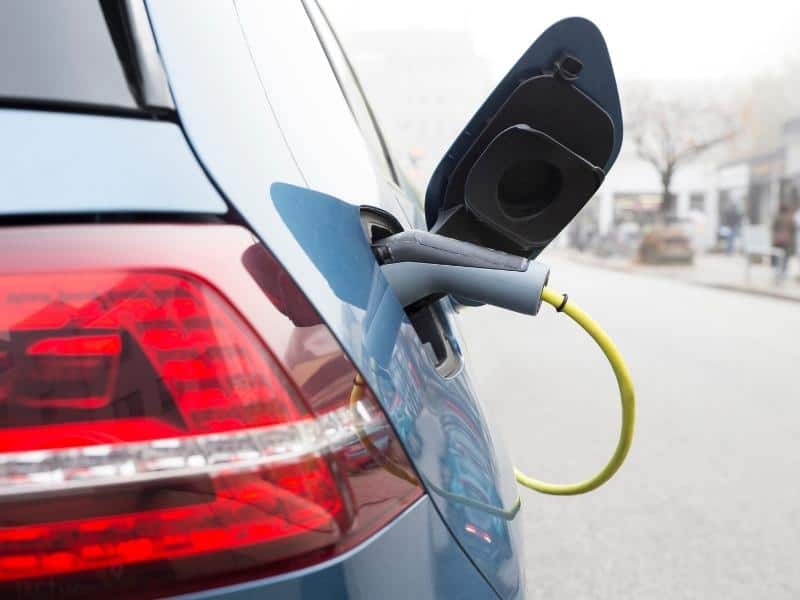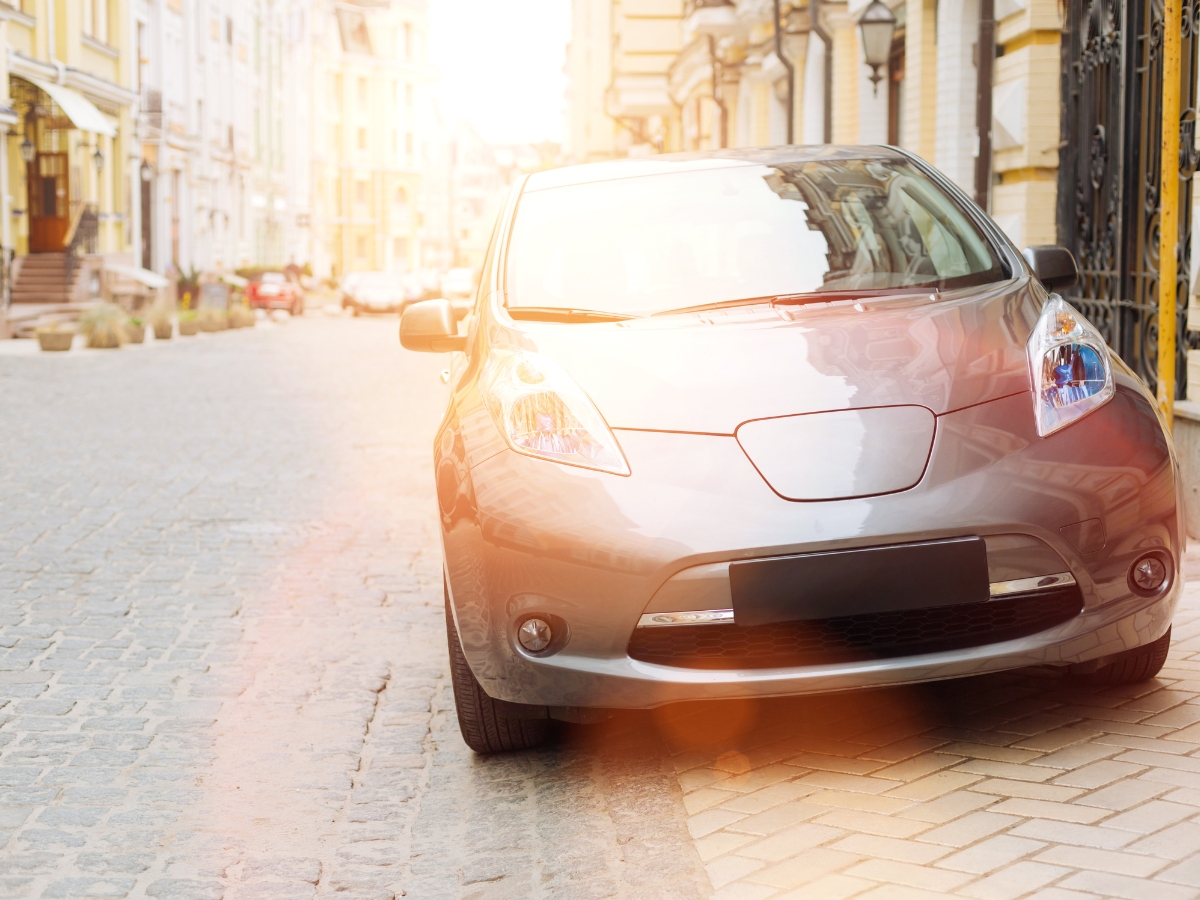Despite rapid improvements in electric car charging infrastructure, running out of power on a highway remains every electric vehicle (EV) owner’s worst nightmare. Many of you may scoff at the concept of using a gas-powered generator to charge an electric vehicle, but the real question is, can it charge your EV, and is it worth it?
Most electric vehicles that charge at home on a 240-volt level 2 charger need 7,200 watts or less. However, Level 1 chargers can connect straight into a 120 V generator outlet and provide an average power output of 1.3 kW to 2.4 kW. This power output is comparable to 3-5 miles per hour of EV range.
We will examine the following key topics in this article:
- How much power does the average electric car need to charge?
- How long does it take to charge an electric car with a generator?
- The advantages and disadvantages of using a generator.
- How to choose the best generator
If you’re planning to go on a long trip with your EV and consider getting a new generator for the road, you came to the right place.
However, the ability of a generator to charge your electric car falls under a few factors to consider before making your next purchase. With that said, can any generator charge your EV?

Can A Generator Charge Your Electric Car?
When it comes to backing up an electric car charger, the usual rule of thumb is that you’ll need a generator that can provide at least 10kW of backup power, especially if you’re doing a Level 2 “quick” charge.
Most portable electric generators, which are meant for smaller emergency backup devices such as lights, freezers, sump pumps, and so on, are ruled out. Extra-large emergency portable generators may get the job done, but they’re generally incredibly heavy and difficult to transport.
Furthermore, if you use one to charge your electric car during a power outage, you may not have many extra kilowatts available to power anything else.
Additionally, because an electric car charger requires a dedicated circuit, you’ll need to connect your portable generator to a manual transfer switch.
Using a permanently installed home standby generator is a more effective way to backup your electric vehicle charger as well as other requirements in your house during an outage.
Depending on the type, standby generators may generate anywhere from 10,000 kW to more than 50,000 kW of electricity and can entirely backup your home.
Standby generators employ an automated transfer switch to turn on automatically during an outage, eliminating the need for human setup. You’ll be able to insert your electric car charger as usual. If you’re serious about charging your electric car quickly during a power outage, you’ll install a standby generator.
Every electric vehicle owner’s greatest dread occasionally happens. Due to a power outage, you cannot charge your car by plugging it into an outlet.
Unfortunately, this scenario is more prevalent than you would imagine, especially in storm-prone areas and areas where rolling blackouts are common. The worst aspect is that your desire to drive is unaffected by the loss of power. A backup generator is useful at home, but what about extended trips?
If you’re planning a lengthy trip or going camping, make sure to leave enough room in your luggage space for a portable generator. If you take a trailer with you, it would be best to take advantage of a larger 120v 3000w portable gas generator that you could even rent one for at Home Depot.
How Fast Does A Generator Charge Your EV?
In EV terms, using a standard level 1 charging system means that your electric car is charging from at least a 120v outlet (which a generator has). Therefore a typical smart EV would allow roughly 15 amps at a rate of 1.7Kw.
The standard smart electric car battery has a 17Kw/h battery, which means from empty to full, a 120v generator would take 10 hours to charge the battery completely.
A Tesla, on the other hand, has a much bigger battery and a relatively more sophisticated computer charging system. Its advanced tech helps to ensure a more clean sign wave, ensuring that the generator is grounded, and as a result, much more is required for the Tesla to charge.
One of the major perks that the Tesla models have, in terms of charging, is adjusting the amps from 5 amps to a maximum of 16amps. On level 1, the Tesla would take 1.8kw charging at 16amps. However, unlike the smart car with a 17kw/h, the Tesla has a whopping 100kw/h battery.
So, the maths behind that would be that 100kw (battery size) divided by 1.8Kw (charging speed) equals 55.5 hours as the time to charge the battery from zero to hero fully.
The Pros And Cons Of Using A Generator
We sometimes forget how vital electricity is and how much we rely on it since it has become a frequent part of our daily lives, both at home and with the next generation of vehicles.
Only when power outages occur due to inclement weather do we understand how important it is to have a generator on hand to provide us with electrical energy. With that said, what are some pros and cons when using a generator?
Pros Of Using A Generator
We’ll go through the most crucial benefits of having a generator in your house here.
- Guaranteed power supply – Because power generators can produce electricity at any time and indefinitely, we will have a supply of power regardless of whether the main power system has failed or if there has been a power outage due to a storm or when your EV has run flat on a long journey.
It will allow us to continue with our daily activities using various electric devices.
- Avoiding damage – We will avoid the losses caused by a power outage in a business by using an electric generator. Similarly, we protect our food in the refrigerator from spoiling or causing damage to our electrical equipment at home.
- Greater security – Losing power may be a problem in particular industries and households with children; therefore, purchasing an electric generator will provide us with more protection.
- Long-term profitability — As long as they are utilized effectively, they are extremely lucrative gadgets.
- An additional “reserve tank” — On those lengthy trips, a smaller generator that you may have tagged along in your EV may squeeze out an extra 10 miles or so to get to your next probable charging station at the expense of your patience when stuck in the middle of nowhere.
Other Benefits Of Using A Generator
When we talk about the house, it’s as easy as deciding which domestic appliances we’ll need to connect to keep our lives running smoothly. We may think of a refrigerator, a microwave, or even a computer that we use at home to work as examples.
Without electricity, an office or a business would be forced to close, not only because we would be unable to work with the machinery with which we operate to offer our products and services, but also because our customers would be unhappy if they could not make purchases or see what they were eating.
Consider the advantage you’d have if you were the only business in the neighborhood with an electric generator to meet the most basic demands; you could potentially double your sales in the event of an outage.
On the other hand, it would help to remember that purchasing an electric generator is not an expense; rather, it is a long-term investment that pays for itself since it eliminates downtime and helps us feel more secure.
Electric generators have also improved significantly in recent years. They used to be bulky, had little autonomy, only lasted 3 hours, had to be recharged regularly, and made a lot of noise.
On the other hand, electric generators are built using technical parameters that significantly lower noise levels, provide great autonomy, and are far lighter.
Cons Of Using A Generator
The generator helps ensure that you have access to electricity at all times. For example, if you get a cut in the cold, it will not influence your comfort. However, as you might expect, the benefits frequently coexist with the drawbacks. Here are 5 typical disadvantages you will find when using a generator.
- If there is no gasoline, there is no generator. It implies that when it operates, combustion gases are released. As a result, you won’t be able to put it inside your lodging. It has to be set up outside (even in a cellar or a garage is excluded).
- When the gadget is turned on, it makes a noise. Depending on the equipment, noise pollution might be more or less severe.
- A generator must be linked to the electrical system before connecting to the home network. If you have no former experience in the field, doing the move on your own appears to be risky. Don’t forget about your system’s mandatory control.
Some EV charging cables have ground sensors installed and would not allow you to charge your car without specialized ground control modifications.
- Your generator must be powered by diesel or gasoline to return to fuel. It means you’ll need to have a certain amount on hand, especially if you want to be prepared for several power outages or refill your generators for longer trips when on the road.
However, both the storage and the generator must conform to environmental rules. Specifically, depending on the generator’s power and the amount of fuel stored, you may need to do certain activities.
For example, the generator, fuel storage, or both may be subject to reporting requirements or require an environmental permit when at home.
- The standby generator conducts regular testing to ensure that it is still operating. Generators consume a lot of gasoline and create a lot more demand. However, keep in mind that generators must also be maintained, incurring additional costs.
How To Choose The Best Generator
The size of the generator (running watts and beginning watts) you need depends on what you want to power. Running watts, also known as rated watts, are the continuous watts required to keep something running or charging.
Starting watts are the additional watts required for two to three seconds to start motor-driven items such as a refrigerator or circular saw – this is the maximum wattage the generator can produce. Most EVs need at least 120v to charge between roughly 10 – 15 amps to get decent miles per hour.
That means the generator needs to be at least 1200 – 1800w or more to work and perform correctly. The more watts it can push out, the more amps it can deliver, resulting in a faster charge.
To maximize the value of your generator, you may want to include it for home use as well, which would consider a few more factors, such as wattage needs.
To calculate your wattage needs, do the following:
- Choose the objects that you want to power at the same moment.
- List the operating watts and extra starting watt needs for each item (you can find these wattage requirements in the operator’s handbook for each product or on the data plate).
- Add the running watts of all the objects you want to power together. You’ll need at least this many running watts from your generator.
- Choose the one item with the most extra beginning watts. Take this one number and multiply it by the total running watts. You’ll need at least this many starting watts from your generator.
Run Time Of Your Generator
Look for a generator with a lengthy half-load run duration. The longer the generator can operate, the less frequently it will need to be refueled. A generator with a half-load run time of at least 10 hours will allow you to sleep through the night without needing to get up to refill.
Outlets On Your Generator
Ensure that the generator has enough outlets and the correct type(s) of outlets. If you want to power a high-wattage device, such as a window air conditioner, seek a generator with a 30amp locking-type outlet.
Portability Of Your Generator
Portable generators may be cumbersome. The generator’s folding handles and wheels make it simple to carry into and out of storage. And if you have space on long journeys, tagging one along on a trailer may be the last resort you need.
Although it does seem pretty counterproductive to recharge your electric car with good ol’ fashion dinosaur oil; however, if you ever get stuck in a remote location and have no other option to recharge your vehicle, charging your electric car up with a portable generator does come in handy.
References



